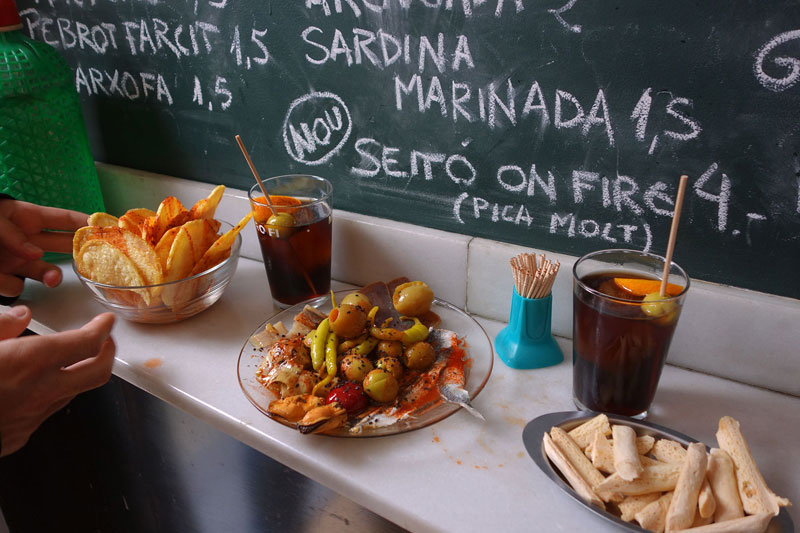Turning European meals into memories
This item appears on page 53 of the July 2016 issue.
Eating in Europe is about more than just the food. The best dining experiences are sensory, where you’re not only eating tasty cuisine, you’re enjoying the patina of age, the colorful clientele and their chatter and the crunchy sound of knives cutting through freshly baked loaves of bread.
After years of travel, I’ve found that just as important as museums and churches is experiencing culture through the hearth, through the kitchen and through the dining room table.
•
To have a memorable meal, you don’t need to eat at a place with a Michelin star, wait in a long line or use a website like TripAdvisor.com to tell you what’s hot. All you need is a few trusty recommendations on where locals eat; just ask a hotelier or shop owner.
You’ll find that the most authentic dining places have a small selection on a handwritten menu in the native language. The menu’s small because they’re going to cook up just what they can sell out for the day, it’s handwritten because it’s shaped by whatever’s fresh in the market that morning, and it’s in one language because they’re targeting local, return customers rather than tourists.
At the end of the night, you may be joined by the chef, who wants to luxuriate in the fun that people are having because of his cooking.
•
A great place to eat with locals is at a market hall, such as Frankfurt, Germany’s, Kleinmarkthalle; Copenhagen, Denmark’s, Torvehallerne KBH, or Florence, Italy’s, Mercato Centrale.
All over Europe, Industrial Age, glass-and-steel farmers’ markets are getting a new lease on life as trendy food halls. They still come with the farmers’ market dimension, but they’ve been spiced up with great eateries and priced for local shoppers and serve the freshest ingredients. As many are geared toward the working crowd, they tend to be most vibrant at lunchtime.
To choose a stall, look for a line of nine-to-fiver natives. They eat out every day and invariably know the best place for an affordable, fill-the-tank bite.
•
I’m not a happy-hour cocktail kind of a guy, but in Europe I like to wind down from a day of sightseeing with a hard drink and munchies out on the town square. In the evening, at bars throughout Europe, students and fun-loving people are out having their spritzers.
Although you generally want to avoid eating at these places, I happily pay too much to enjoy a cup of coffee or a cocktail on the most expensive piece of real estate in town and watch the scene go by. Think of it as renting a spot to enjoy the show.
•
It’s said that in much of Europe, smart eaters can identify the region and month by what’s on the menu at a good restaurant. I tend to order daily specials, which usually highlight what’s seasonal (or I look at what locals are eating).
For instance, white asparagus is a treat for your palate in spring... but comes out of the freezer the rest of the year.
If French onion soup and cheese fondue are on the menu in summer, the place is a tourist trap; a restaurant for locals wouldn’t serve these winter dishes in July.
I also make it a point to try regional specialties, such as cassoulet in the southwest of France, cochinillo asado (roast suckling pig) in Segovia, Spain, or bistecca alla fiorentina in Florence (made from the white Chianina breed of cattle grazing throughout Tuscany). Barnacles in Portugal are expensive but so worth it — the best seafood I’ve ever eaten.
Whenever possible, I order family style so I can eat my way through more of the menu.
Sometimes, rather than getting two main courses, my travel partner and I share a little buffet of appetizers or first courses; they’re filling, less expensive and more typically local than entrées. These small plates go by different names throughout Europe: tapas in Spain, mezedes in Greece and antipasti in Italy.
•
One of my favorite rituals after an epic meal is to walk back to my hotel and take in the quiet scenes of a village at night. Several times, I’ve spotted a chef docked in a chair outside his restaurant, sipping a glass of wine or liqueur and puffing on a cigarette.
For me, a memorable European meal is a holistic experience. It’s hiking 20 minutes to a Greek seaside taverna and choosing from a display case of dishes prepared with market ingredients and the day’s best catch purchased directly from the fishermen, or feasting for three hours on a full-blown Italian dinner with multiple courses and unending glasses of liquor, then chatting with the chef when the dinner rush ends.
It’s all part of the European culture of eating… and what makes travel there so special.
Rick Steves writes European travel guidebooks and hosts travel shows on public television and public radio. Reach him c/o ITN.

